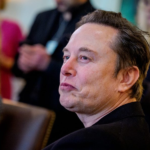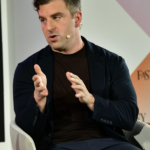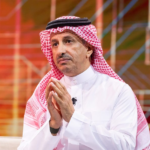In the weeks following President Trump’s ‘Liberation Day’ announcements, the White House painted a picture of frantic activity and optimism for a rapid flow of deals coming down the pipe.
A month later, no such agreements have been signed.
While foreign governments were frustrated but willing to come to the table and work with the Trump administration, leaders from across the globe also made it clear that they wouldn’t race to sign on the dotted line for a deal which didn’t benefit their people in the long term.
Questions are mounting for the Trump cabinet about when anxious voters can expect some action, potentially signaling a fractional easing of the economic pressure facing consumers when the president’s 90-day pause expires.
Perhaps more significantly China—the world’s second-largest economy and the primary source of trade war fears—has offered the Trump team some reprieve by saying it is “assessing” the American’s approach.
The more nuanced tactic is seemingly more palatable to the Chinese government than President Trump’s initial approach, which has been to robustly critique the U.S.’s economic rival and threaten its government with escalating sanctions if they did not agree to terms.
The minister added: “Saying one thing and doing another, or even attempting to use talks as a pretext for coercion and blackmail, will not work with China.”
Indeed Japan’s prime minister prime minister, Shigeru Ishiba, said he was in no rush to work to America’s timeframe if it meant making too many concessions.
But green shoots now seem to be appearing following a second round of conversations between Japan’s chief negotiator Ryosei Akazawa and U.S. officials including Treasury Secretary Scott Bessent and Commerce Secretary Howard Lutnick.
Akazawa added he hoped to see a deal signed by June—the first time a concrete date has been floated—but cautioned: “It is not simply a matter of speed, as there are national interests that must be protected on both sides, which will take some time. There are still many issues that need to be addressed and resolved before a final agreement can be reached.”
Conversations also seem to be progressing with India, with diplomats on both side confirming developing negotiations. India’s Prime Minister Narendra Modi posted on X following vice president JD Vance’s visit to India that the duo “reviewed the fast-paced progress following my visit to the U.S. and meeting with President Trump.
“We are committed to mutually beneficial cooperation, including in trade, technology, defence, energy and people-to-people exchanges.”
Lutnick added he is waiting for sign-off from the unnamed nation’s prime minister and parliament, but added he expects this “shortly.”









